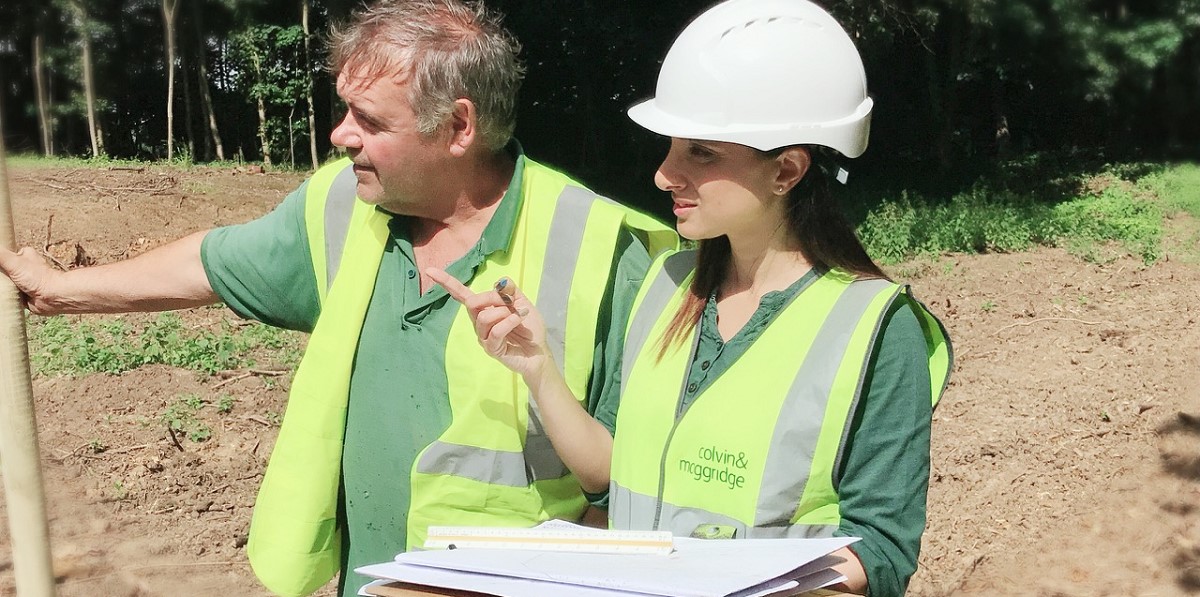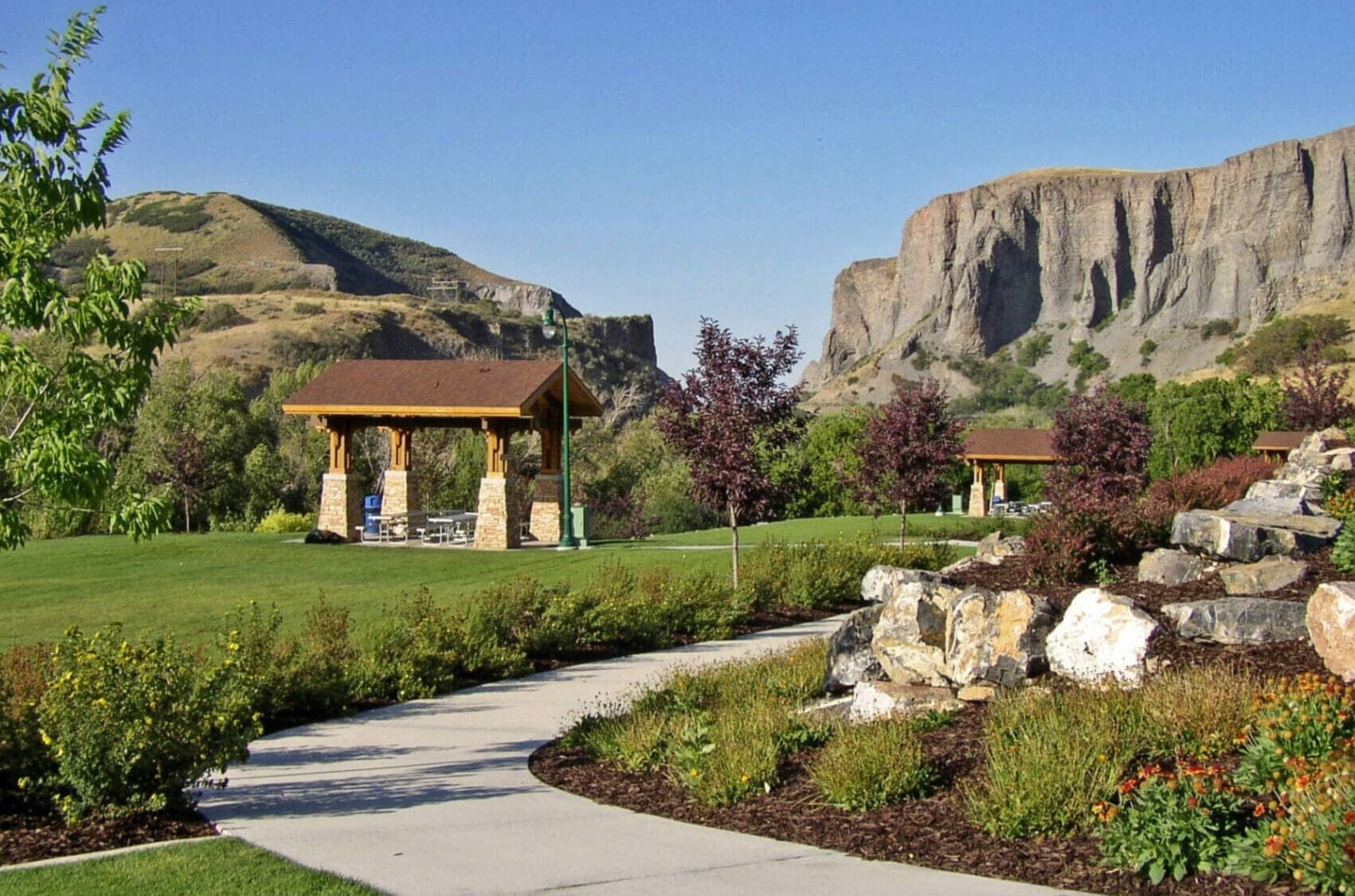Home>diy>Planning & Engineering>At What Age Can A Landscape Architect Start Working?


Planning & Engineering
At What Age Can A Landscape Architect Start Working?
Modified: February 25, 2024
Find out the appropriate age for landscape architects to begin their career in planning and engineering. Explore the possibilities and opportunities in this field.
(Many of the links in this article redirect to a specific reviewed product. Your purchase of these products through affiliate links helps to generate commission for Storables.com, at no extra cost. Learn more)
Introduction
Becoming a landscape architect is a dream for many individuals with a passion for designing beautiful outdoor spaces. From creating stunning gardens to planning environmentally sustainable projects, landscape architects play a vital role in transforming landscapes into captivating and functional spaces. If you’re interested in pursuing a career in landscape architecture, you may be wondering at what age you can start working in this field.
Landscape architecture is a multidisciplinary profession that combines elements of art, design, ecology, and horticulture. As a landscape architect, you’ll be responsible for creating outdoor environments that are not only visually appealing but also meet the needs and desires of the clients and communities you serve. Whether you’re interested in residential design, urban planning, or environmental restoration, the field of landscape architecture offers a wide range of opportunities to explore.
But at what age can you start working as a landscape architect? The answer to this question depends on various factors, including educational requirements, professional licensing, work experience, and legal restrictions.
Key Takeaways:
- Becoming a landscape architect requires a solid academic foundation, practical work experience, and professional licensing. It’s a blend of creativity, technical skills, and a commitment to environmental stewardship.
- Internships, volunteering, and networking are vital for aspiring landscape architects to gain hands-on experience, build a strong portfolio, and enhance their understanding of the industry.
Academic Requirements for Becoming a Landscape Architect
To become a landscape architect, a solid academic foundation is essential. The first step is to earn a Bachelor’s degree in landscape architecture or a related field. Many accredited universities and colleges offer undergraduate programs specifically designed to prepare students for a career in landscape architecture.
During your studies, you’ll gain knowledge and skills in areas such as environmental design, site planning, plant selection and cultivation, landscape construction, and digital modeling. You’ll also develop an understanding of landscape architecture history, theory, and the principles of sustainable design.
In addition to completing coursework, you’ll have the opportunity to participate in hands-on design studios and collaborative projects. These experiences will help you develop critical thinking, problem-solving, and communication skills – all of which are crucial for a successful career in landscape architecture.
After obtaining a bachelor’s degree, some aspiring landscape architects choose to pursue a Master’s degree in landscape architecture to further enhance their knowledge and expertise. While a Master’s degree is not always required, it can provide a competitive edge in the job market and open up more advanced career opportunities.
It’s worth noting that the academic requirements for becoming a landscape architect may vary slightly depending on the country or region in which you intend to practice. Therefore, it’s important to research and understand the specific educational requirements set by the professional associations or licensing boards in your area.
Obtaining a solid educational foundation in landscape architecture is a crucial first step toward building a successful career in this field. However, it is not the only requirement. In addition to academic qualifications, aspiring landscape architects must also obtain professional licensing and gain practical work experience, which we will explore in the following sections.
Professional Licensing and Certification
In order to practice as a landscape architect, obtaining professional licensing is typically required. Licensing ensures that landscape architects meet certain standards of competence and professionalism, ultimately safeguarding the public interest. The specific licensing requirements may vary from one jurisdiction to another, so it’s important to research the regulations in your area.
In many countries, including the United States, landscape architects must pass the Landscape Architect Registration Examination (LARE) to become licensed. The LARE is a comprehensive examination that assesses the knowledge and skills necessary to protect and enhance the health, safety, and welfare of the public through effective landscape architecture practice.
In addition to licensure, earning professional certification can further enhance your credentials as a landscape architect. Organizations such as the Council of Landscape Architectural Registration Boards (CLARB) offer certification programs that are recognized internationally. The most well-known certification for landscape architects is the Landscape Architecture Certification (LAC) program, which signifies a high level of expertise and professionalism in the field.
By achieving professional licensing and certification, you demonstrate to clients, employers, and colleagues that you have met rigorous standards and are committed to upholding the highest ethical and professional standards in your practice. These credentials can help you stand out in a competitive job market and attract potential clients or employers.
It’s crucial to stay informed about any ongoing professional development requirements to maintain your licensing and certification. Many professional associations and licensing boards require landscape architects to keep their knowledge and skills up to date through continuing education courses and professional development activities. This ensures that professionals stay current with emerging trends, technologies, and best practices in the field.
In summary, professional licensing and certification are essential steps in the process of becoming a landscape architect. By obtaining these credentials, you demonstrate your competency and commitment to the profession, which can significantly impact your career prospects and professional growth as a landscape architect.
Gaining Work Experience as a Landscape Architect
While academic qualifications and professional licensing are important, gaining practical work experience is equally crucial for aspiring landscape architects. Work experience provides the opportunity to apply theoretical knowledge in real-world scenarios, develop practical skills, and build a professional network within the industry.
One way to gain work experience is through internships or entry-level positions. Many landscape architecture firms offer internships to students or recent graduates, providing them with hands-on experience in various aspects of the profession. These internships may involve assisting senior landscape architects in design projects, conducting site visits, preparing project proposals, and creating presentations.
Internships not only offer valuable practical experience but also allow you to observe and learn from experienced professionals. They provide insights into the day-to-day responsibilities, challenges, and rewards of working as a landscape architect. Additionally, internships allow you to build a portfolio of work that showcases your skills and creativity, which can be an asset when seeking employment in the future.
Another way to gain work experience is through volunteering opportunities. Non-profit organizations, community groups, and government agencies often need assistance with landscape design and planning projects. These volunteer experiences not only allow you to contribute to a worthy cause but also provide valuable hands-on experience in real-world projects.
Networking is also an essential aspect of gaining work experience as a landscape architect. Attend industry events, conferences, and workshops to connect with professionals in the field. Building relationships with experienced practitioners can provide valuable mentorship, future job opportunities, and insights into the industry.
Additionally, consider participating in design competitions or submitting your work for publication in industry journals or magazines. These experiences not only help build your professional reputation but also provide opportunities to showcase your design skills and creativity to potential employers or clients.
Overall, gaining work experience as a landscape architect is a vital step in your career journey. It allows you to apply your knowledge, develop practical skills, build professional connections, and further refine your design abilities. By actively seeking out internships, volunteering opportunities, and networking events, you can enhance your chances of securing employment and thriving in the field of landscape architecture.
A landscape architect can start working after completing a bachelor’s or master’s degree in landscape architecture, which typically takes 4-6 years. Some may also gain experience through internships or entry-level positions.
Age Restrictions and Legal Requirements for Employment
When it comes to age restrictions and legal requirements for employment as a landscape architect, the specific regulations can vary depending on the country or region. It’s important to familiarize yourself with the labor laws and regulations in your area to ensure compliance and eligibility for employment.
In many countries, there are no specific age restrictions for starting a career as a landscape architect. As long as you meet the academic and professional qualifications, you can pursue employment in the field. However, it’s worth noting that due to the nature of the profession, landscape architecture often requires a high level of technical skills and design expertise. Therefore, most individuals entering the field typically do so after completing their undergraduate or graduate education.
In terms of legal requirements, landscape architects may be subject to certain regulations and codes of practice. These regulations vary from country to country and encompass various aspects such as environmental protection, construction standards, and safety measures. Landscape architects are responsible for ensuring that their designs comply with these legal requirements, taking into account factors such as accessibility, sustainability, and public safety.
In addition, depending on the jurisdiction in which you practice, landscape architects may require professional liability insurance. This insurance protects against potential claims arising from errors or omissions in the design or execution of landscape projects. It is important to consult with legal professionals or industry associations to understand the specific insurance requirements in your area.
It’s also important to consider any work permit or visa requirements if you plan to work as a landscape architect in a foreign country. Different countries have different regulations concerning foreign workers, and obtaining the necessary permits or visas may be required before you can legally work in a specific country.
Ultimately, it is crucial to familiarize yourself with the legal requirements and regulations applicable to landscape architects in your area. By ensuring compliance with labor laws, professional codes of practice, and any necessary permits or visas, you can pursue a fulfilling and lawful career in landscape architecture.
Read more: What Age Can Babies Start Using A Blanket
Internship Opportunities for Landscape Architecture Students
Internships are a valuable part of the journey for landscape architecture students. They provide practical experience, allow for professional networking opportunities, and enhance your understanding of the field. Here are some key aspects to consider when seeking internship opportunities as a landscape architecture student.
1. Research and reach out to firms: Start by researching landscape architecture firms in your area or region. Look for firms that align with your interests and design aesthetic. Visit their websites, explore their portfolios, and gain an understanding of their work approach. Once you have identified potential firms, reach out to inquire about internship opportunities. Many firms offer internship programs for students, providing hands-on experience and mentorship.
2. Check with your school: Some universities or colleges have partnerships or connections with local landscape architecture firms. They may have established relationships with firms that regularly offer internships or co-op programs. Check with your academic department or career services office to see if they can provide guidance or facilitate internship connections.
3. Attend career fairs and industry events: Industry-related events, such as career fairs or professional conferences, are excellent opportunities to connect with firms and professionals in the landscape architecture field. These events often have designated times for networking or even on-site interviews. Make sure to bring copies of your resume and portfolio to showcase your skills and interests.
4. Volunteer or work on community projects: Consider getting involved in community projects or volunteering with organizations that focus on landscape design, restoration, or urban planning. Not only will this give you hands-on experience, but it will also demonstrate your commitment to the field and passion for creating positive environmental impact. These experiences can also serve as valuable additions to your portfolio or resume.
5. Seek out government or public agency internships: Some government bodies, such as parks departments or urban planning agencies, offer internships or co-op programs in landscape architecture. These opportunities can provide unique experiences working in the public sector and contribute to community development initiatives. Check government websites or reach out to relevant agencies to inquire about internship possibilities.
6. Create a strong application package: When applying for internships, ensure that your application package is professional and well-prepared. Update your resume with relevant coursework, projects, and any previous work experiences, highlighting your skills and achievements. Develop a portfolio that showcases your design abilities and range of work. Write a compelling cover letter outlining your passion for landscape architecture and your interest in the specific internship opportunity.
Remember, internships are not only about acquiring technical skills but also about building professional relationships. Take the opportunity to learn from experienced practitioners, ask questions, and seek mentorship. Active participation during your internship will enhance your knowledge and prepare you for the challenges and opportunities that lie ahead in your landscape architecture career.
Conclusion
Becoming a landscape architect is an exciting and fulfilling career choice for individuals with a passion for design, sustainability, and the natural environment. While the specific age at which you can start working as a landscape architect may vary based on educational requirements and legal restrictions, the journey typically begins with obtaining a solid academic foundation in landscape architecture.
Completing a Bachelor’s degree in landscape architecture or a related field provides the necessary knowledge and skills to embark on a career in this field. Some individuals also choose to pursue a Master’s degree to further develop their expertise and stand out in a competitive job market. Throughout your academic journey, it’s crucial to stay informed about the specific educational requirements and professional licensing regulations in your area.
In addition to academic qualifications, gaining practical work experience is essential for aspiring landscape architects. Internships, volunteering, and networking opportunities provide hands-on experience, allow for mentorship, and enhance your understanding of the industry. Building a strong portfolio of work and actively engaging with the landscape architecture community can significantly contribute to your professional growth and future employment prospects.
Professional licensing and certification further validate your competence and commitment to the profession. Understanding the specific licensing requirements and staying up to date with ongoing professional development ensures that you maintain the highest standards of practice as a landscape architect.
As you navigate your journey toward becoming a landscape architect, it’s important to be aware of any age restrictions and legal requirements for employment. Familiarize yourself with labor laws, codes of practice, and any necessary permits or visas to ensure compliance and eligibility for employment.
In conclusion, a career in landscape architecture offers a blend of creativity, technical skills, and a commitment to environmental stewardship. By acquiring the necessary academic qualifications, gaining practical experience, and staying informed about professional requirements, you can embark on a rewarding journey to shape and transform the landscapes around us, creating beautiful and sustainable outdoor spaces for generations to come.
Frequently Asked Questions about At What Age Can A Landscape Architect Start Working?
Was this page helpful?
At Storables.com, we guarantee accurate and reliable information. Our content, validated by Expert Board Contributors, is crafted following stringent Editorial Policies. We're committed to providing you with well-researched, expert-backed insights for all your informational needs.















0 thoughts on “At What Age Can A Landscape Architect Start Working?”